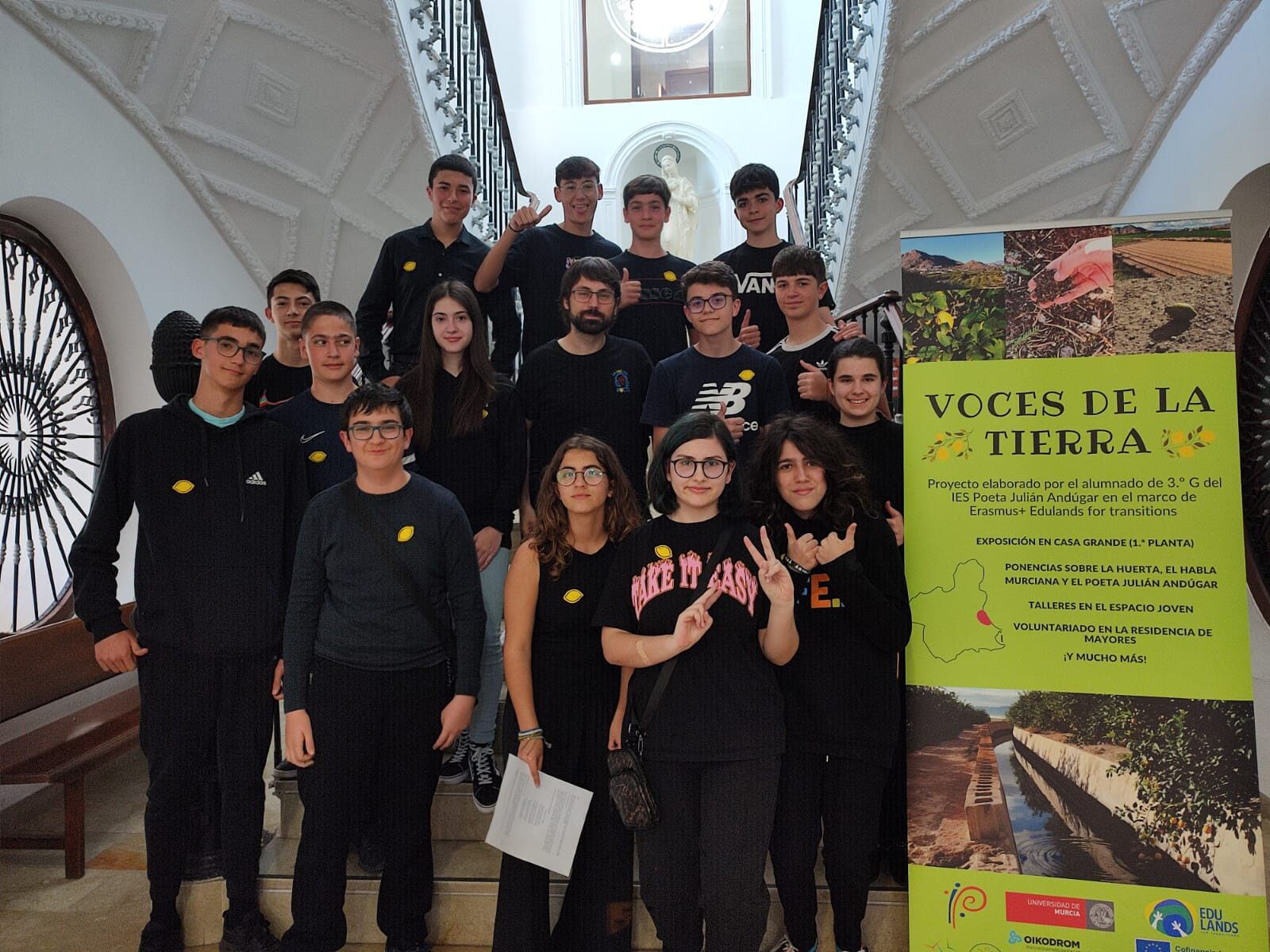
This action has consisted of initiating a change in the model of relationship between the school and different sectors of society through the contents of the subject of Spanish Language and Audiovisual Communication. The activities and products have been very varied.



Multidisciplinary educational project that combines various fields of study. It encompasses elements of linguistics, geography, history, literature, and cultural studies. It focuses on promoting community engagement through language, heritage, and arts education, particularly within the context of a local region or community.
The type of collaborative experience is best characterized as a «Community-Based Learning» or «Service-Learning» project. This type of educational experience involves students collaborating with community members, local experts, and various sectors of society to address real-world issues or promote community well-being. In this case, students are engaged in activities that contribute to the local community’s understanding of its heritage, culture, and language while also fostering interrelations between the school and society. This collaborative experience goes beyond the classroom and actively involves students in practical, community-centered activities.
In the first session, students carry out a questionnaire with two different parts: a) general part: they ask themselves what the landscape is, they must give an open answer with their own definition; b) Specific part: it questions about what they understand by linguistic landscape, through questions that try to know their opinion on the prestige of linguistic variety and on the features that characterize it, especially those that are going to be studied through the survey. The answers are shared and serve as a starting point to build a new definition of ‘landscape’.
Based on feedback, which starts from the results of the initial evaluation and goes through the organization of the groups and the entire process of research and dissemination of the project, which is adapted and oriented according to the needs that the students show.
The evaluation has been based on the work done by each one, that is, not everyone has been able to evaluate the same criterion. In addition, since we have worked with a whole group (20-24 students), it has been difficult to do an individual evaluation on the different phases and works. The Edulands methodology is difficult to apply in large groups.
In addition, due to the immense amount of working hours that took the organization of the three phases of the action, the evaluation “phase” was the most affected, because it could not be planned as it should. In any case, the evaluation instruments have been the participation in the presentations, in the audio guide and in the preparation of the exhibition in general. There has been no exam or standardized written work for everyone.
The students who could not be evaluated through Edulands (because not all have participated and some have done it so very sporadically), made videos in which they explained the exhibition and the action that had been developed by their classmates.

